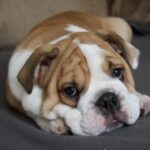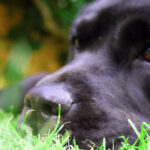Pugs are one of the most personable and wonderful breeds of dogs. They are popular both because of their funny looks and the Pug-quality of a dependent friend. They are relatively easy to take care of, except for the shedding. They can live in smaller quarters, or without a yard. They are great around families. They are also good in packs, however, the system of hierarchy and comfort must be established. Pugs are one of a kind dogs. I never thought I would be a small dog person, but that’s all changed. Even with all these things considered, Pugs do face specific health problems due to the specifics of the breed.
- Eyes – Since the eyes of a Pug can stick out, or — at the very least, are not very well protected, they are susceptible to corneal scratches from cats or other dogs. I don’t recommend to declaw your cats, but the cats have to have scratching posts, and the cat must be comfortable around the dog.
- Teeth – Since the Pug tongue is too big for their mouths, and their mouths are so little, their teeth are small and sensitive. Pugs can break or crack their teeth easier than other dogs because their teeth are not as strong. It is recommended to take your dog into the vet to get an oral check-up twice a year. Some people brush their dogs teeth. I do, three times a year maybe, but they hate it. I also suggest that you avoid giving your dogs table scraps or even the bones from leftovers because the bones can break the Pugs teeth. This can lead to infection and abscesses which can require surgery and antibiotics, which is costly.
- Renal Failure – Pugs have a natural risk of renal failure, and this is a serious issue. The anal glands of the Pug need to be drained on a scheduled basis. Certain lamb-based foods have been suggested to be bad for Pugs, but that is certainly not the case with all of them, and is case specific to an ingredient. One thing is for certain, brewers yeast, good for many dogs, is not very good for Pugs. Garlic, while used in moderation to treat fleas, is not good for Pugs in the same way that chocolate or mushrooms are bad for them. Pugs can loose control of their bowel functions, and since they have sensitive stomachs to begin with, it is suggested to find the food they like the most and that you like the most and you stick with it. It might be nice to spoil your pet, but sometimes the things we give them have substantial consequences.
- Sensitive stomach – Pugs have sensitive stomachs, sometimes, when a dog is going through a spell, we will give it chicken broth, water, and a very small amount of rice on top of their food. It’s not the cleanest way to fix the problem, and you can leave the rice out, but sometimes a little kick to their food is all they need. I mean they eat the same stuff all the time, and when they don’t, why do we think is going to happen?
- Hip Dysplasia – Although common in larger dogs like German Shepherds or Golden Retrievers, Pugs are sometimes prone to hip dysplasia or patella issues, so it is good to keep them in a good weight range, give them exercise, glucosamine supplements to help joints. If they do start to lose strength in the back end, they are small enough to move around, and often, people build back carts for Pugs to sit and pull on. They’re wonderful creatures, but seeing an older dog with hip dysplasia try to walk up the stairs is hard, but with a Pug, it’s like taking on a mountain. The best thing owners can do is look for any early signs and be educated.
- Breathing – Pugs, with their pugnaciously stuffed snouts, have a more difficult time breathing than most breeds because of blocked respiratory passages and a tongue that is too big for their mouths. Also, Pugs are so sensitive to the heat, that at when their internal body temperature exceeds a certain limit their organs begin to break down. Never leave a pug in a hot car, or on the sidewalk without any water or shade. They need to be able to breathe, or they might have a seizure or a heat stroke. (If seizures occur, immediately take to veterinarian). Pugs can overheat in the winter near furnaces and in the summer underneath willow trees — just have water around. Pugs who chew pigs ears can suck the bone down so that it gets stuck in their throats, obviously forcing a breathing and choking problem. The tongue makes for many space issues in the mouth, but it is what they use to get what they want from their masters.
- Heart Disease – Heart disease, like hip dysplasia, can be worked to be avoided through careful weight management, everyday exercise, and steady diet. Some Pugs can be big pups. I’ve seen males that weigh 34 pounds. My seven year old, she weighs 25 pounds, but she could stand to lose one or two. Heart disease is common in pugs because they run so many other health risks. Taking dogs on special trips makes them happy, letting a dog accomplish animal exercise is the best thing for them. After a good walk and a good run, a happy dog is a good dog. Pugs might be lazy, but they love to have fun, so keep them in shape as long as you can!
- Keep them updated on vaccinations including ringworm, parvo, rabies, heartworm. For dogs that sniff around a lot of unsavory elements, this is most certainly suggested. It’s always the safest bet to get a parvo vaccination because that is the one that will cost the most if things go wrong, and it is the most dangerous and the most prevalent.
- Urinary Tract Infections – Pugs have short urethras which make them a little more likely to develop a UTI. Pugs can drink cranberry juice, but it can be the fake junk, and mix that in with a little water to offer relief to the dog. If a UTI occurs, your doc will probably give you antibiotics for four to five days.
- Birthing – Pugs run a great risk in breeding. It is unfortunately. The bitches don’t carry as many in their litter as other breeds, and the chances of their survival are not as high as many other breeds either. However, I knew a half dozen wonderful breeders of pugs in Pennsylvania who would make you fall in love with Pugs all over again from one step onto their farm. Breeding is a difficult choice you have to make as a pug owner, especially if you own the female. Some people regret it, some people don’t. I spay and neuter all of my pets, but, after years of seeing my purebred grow up to be the best dog we’ve ever had, I sometimes wish I could breed her, but I wouldn’t give it up in a second. It’s a risk, but it’s a wonderful one.
The nice thing about a list is that it can end with the last number. With this brief list of health concerns, I can just open the door to the thousand of things Pug owners everywhere love about their dogs and friends. Thank the heavens that I saw Men in Black as an uncaring 18 year old because I went out and bought a pug the next day for my mother, and my whole family, fourteen years later is hooked on pugs and forever will be.
My mom and dad both suffer from some pretty serious (choose your word carefully). Two strokes, a heart attack and the end of cancer remission is a lot to go through. But they have their pugs there. I only live a mile away, but I could pick better dogs to be with them in this stage of their life. They might not be smart, but they have heart, and I’ve known about 9 people who didn’t like them.





